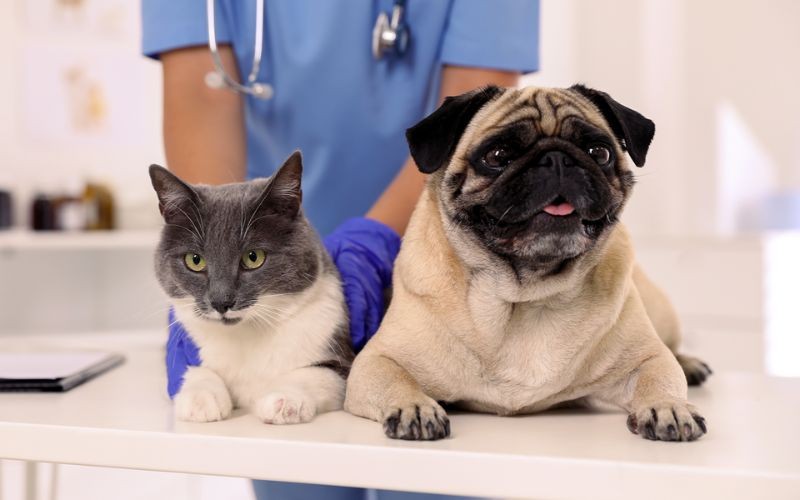
Diabetes in pets
Just like humans, diabetes in pets is a serious issue, demanding a lifelong commitment to ensure affected pets live a healthy and happy life.Diabetes, or Diabetes mellitus, occurs when the body does not produce enough insulin to break down sugar in food, or it does not use it properly, leading to high blood sugar levels.
Two types of diabetes can be identified in pets:
- Type I: in which the pet does not produce enough insulin, a hormone that regulates blood sugar.
- Type II: in which the pet develops insulin resistance, therefore the body does not use insulin effectively.
Maintaining blood sugar levels within the normal range is crucial to prevent life-threatening complications affecting the eyes, urinary tract, kidneys, and liver.
Common symptoms and clinical signs of diabetes
To detect diabetes in pets, here are some of the most common signs to watch out for:
- Increased thirst and urination
- Increased appetite
- Weight loss
- Cloudy eyes (especially in dogs)
- Fatigue
- Poor coat condition
- Slow wound healing
- Chronic or recurring infections
Which pets are more at risk?
Diabetes can affect pets of all ages and breeds, but certain factors can increase the risk.
In dogs, it is more common in middle-aged to senior pets (typically around 7-10 years of age), and it occurs more often in females than males.
Dog breeds at higher risk of diabetes include Samoyeds, miniature Schnauzers, Poodles and Pugs.
For cats it is more common in senior cats, and neutered males. Among cat breeds, the Burmese is the more susceptible, with a 4-fold chance of developing this condition.
Obesity and diabetes in pets
For both species , obesity represents a significant risk factor. It’s crucial for pet parents to be especially vigilant about their pets’ weight given, according to some studies, up to 63% of pet cats and 59.3% of pet dogs are overweight or obese.
Even a slight weight gain can have a notable impact on pets. For instance, just one or two extra kilos can push your pet into the overweight category. To put it in perspective, one kg on a 5 kg cat is equal to 16 kgs on a 80 kg human. So don’t underestimate that extra kilo, especially if you are a cat parent or small breed dog parent.
Obesity can significantly increase the chance of a pet getting diabetes, and once it sets in, the weight in excess is more difficult to drop, creating a detrimental cycle for your pet.
Managing your pet's weight through a healthy diet and lifestyle is crucial to prevent various health issues, including diabetes.
Caring for pet
Just like any condition, prevention is the key. If your pet is currently struggling with weight issues, refer to our Genius Tips Articles for guidance on maintaining a healthy weight and don’t forget to seek advice from your Farmina Consultant, who will help create the best nutrition plan for your pet.
If your pet is diagnosed with diabetes, follow your veterinarian's recommendations as well as including a diet based on Farmina Vet Life Diabetic (available for both dogs and cats). This formula helps manage weight issues and, more importantly, diabetes mellitus in your cat or dog.

